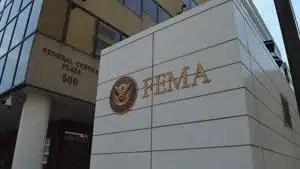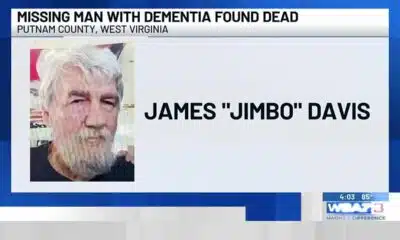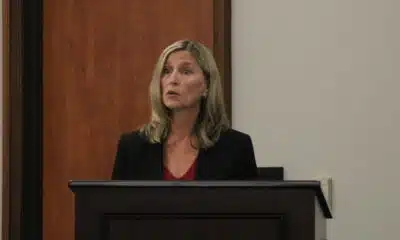(The Center Square) – Abigail Martinez lost her 19-year old daughter Yaeli to suicide in 2019 and blames the public school system for pushing gender transition on her daughter.
Martinez, a Salvadoran, Christian immigrant who raised four children in California, lost custody of Yaeli for not affirming her gender transition, and says the transition was the result of “brainwashing” by school staff at Arcadia Unified School District in Los Angeles County that she says was spurred by her efforts to get the school to help treat her daughter’s depression.
In an interview with The Center Square, Martinez said that public schools are endangering children who struggle with mental health issues.
“I feel betrayed, because I went to ask for help, I never asked to send my child to the LGBTQ meetings. I just wanted them to keep an eye on her and help deal with depression, but instead, it was a good target to them, to pursue her and input all this ideology into her,” said Martinez. “If I hear about a child or parents who are dealing with this, I ask them to pull them out of school because school is not a safe place for our children.”
In an amicus brief filed with the United States Supreme Court by First Liberty, a pro-bono legal organization focused on religious freedom, Martinez outlined how her daughter began questioning her sexuality amid a bout of depression in high school. The Supreme didn’t accept the case, which centered on a parent losing custody for not supporting a gender transition.
School staff “told Yaeli to clandestinely join the LGBTQ club where she was persuaded that the only way to be happy was to change her gender,” the brief alleged. “An older transgender student, also a female transitioning to male, convinced Yaeli that her depression was because she was transgender.”
Arcadia Unified School District required staff to use transgender students’ preferred names and pronouns without parental notification or permission. The district also directed staff to “keep students’ actual or perceived gender identity ‘private’ from parents.”
The brief says “Yaeli’s school psychologist encouraged her to pursue a gender transition instead of treating her depression,” soon after which Yaeli was hospitalized for attempting suicide. Yaeli’s former principal visited Martinez and Yaeli at the hospital, urging that she call Yaeli “Andrew,” and asking, “Is it too hard for you to call your child a new name?”
When Yaeli was 16, the parent of her transgender classmate took Yaeli from home and hid her for two days, Martinez said. After that, the school psychologist who was “pushing Yaeli’s gender transition told her to accuse her mother of abuse at the police station, which would allow the state to pay for Yaeli’s gender transition without parental consent.”
In California, the taxpayer-funded Medi-Cal healthcare system covers “gender-affirming care,” including “hormone therapy” and a “variety of surgical procedures that bring primary and secondary gender characteristics into conformity with the individual’s identified gender.”
As a result of Yaeli’s report, Martinez was placed on a child abuse registry, and Yaeli was taken by the California Department of Child and Family Services into a group home.
In court, a judge sided with the school psychologist to allow Yaeli to receive male hormones. Martinez was allowed to visit Yaeli one hour per week with monitoring from the Los Angeles LGBT Center. Martinez said she was warned that if she talked about God during her visits with Yaeli, she would never see her daughter.
At 19, Yaeli was still estranged from her mother. Living separately but hungry, poor and depressed, Yaeli reached out to her mother for food, and Martinez immediately brought groceries, the mother said. Yaeli told her mother “she knew she would never become a boy, and that the cross-sex hormone treatments were causing severe pain in her bones.”
Things seemed to be looking up after Martinez was absolved of the abuse claims and taken off the child abuse registry, but two months later, Yaeli committed suicide, taking her life by lying on train tracks.
Martinez said she hopes school districts learn from Yaeli’s death, and that gender ideology and gender-affirming medical interventions for children are put to an end.
“I just hope they learn they are doing wrong, they are killing kids with depression and they are leading them in the wrong way,” said Martinez. “This is a life that was lost. Not just my daughter, I hear many kids, after treatment they commit suicide because that’s not what they need. They need to stop: all the doctors, the surgeons, and everyone who is involved must stop with this ideology.”
According to medical billing data reviewed by Do No Harm, which describes itself as a “a national association of medical professionals combating the attack on our healthcare system from woke activists,” at least 2,084 California children received gender reassignment procedures, including surgeries and administration of hormones, from 2019-23.
The Center for Transyouth Health and Development at Children’s Hospital Los Angeles had the second-highest number of such patients in the nation, and entered a partnership with Los Angeles Unified School District, the second-largest school district in the nation, to direct students to CTHD.
After a Trump administration executive order seeking to effectively ban and terminate “chemical and surgical mutilation” for American youth, CHLA announced it would not be taking new patients under 19 for hormonal transitioning.
California Attorney General Rob Bonta warned that hospitals withholding “hormone therapies” and “gender-affirming surgeries” from minors are in violation of state law if they otherwise offer similar interventions to “cisgender” individuals seeking changes to better align with their birth genders, such as individuals with hormonal issues.
CHLA then reversed its decision, announcing it would accept new patients seeking to transition, before later reversing course yet again and announcing CTHD would close its doors on July 22, citing funding risks under the Trump administration executive order.
“CHLA has determined that – under current conditions and despite significant efforts to avoid this outcome – there is no viable alternative to closing the Center for Transyouth Health and Development, along with the Gender-Affirming Care (GAC) surgical program. As a result, the Center and program will be closing, effective July 22, 2025,” wrote CHLA in a staff-wide email shared by journalist Benjamin Ryan on X.. “Federal agencies – including the Department of Justice (DOJ), Health and Human Services (HHS), Centers for Medicare and Medicaid Services (CMS), the FBI, and the Federal Trade Commission – have taken actions to clarify the executive order impacting GAC, including severe consequences for hospitals and other providers that do not comply.”
The email notice said that CHLA would seek to redirect existing patients to alternative providers. According to Los Angeles LGBT Center, “over 2000 patients … lost their care as a result of CHLA’s decision.”
















































